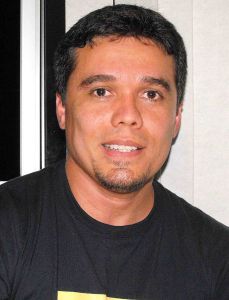My name is Daniel Brito de Freitas. I am an young “Astrostatistician” and Professor of Physics at the Federal University of Ceará, Fortaleza in Northeast Brazil. In this first contact, I present my current and future research. Go ahead!
I have a very broad spectrum of research interests, ranging from statistical physics, nonlinear dynamics, statistical analysis and ASTROSTATISTICS to stellar astrophysics and geophysical systems. In my current work, I discuss the statistical mechanics of nonlinear systems or nonlinear dynamics due to anomalous or unexpected behavior presents in physical systems, i.e., these that exhibit the properties of nonadditivity and heterogeneity. Nonlinearity evolving dynamical systems are a class of physical ensembles involving long-range interactions (complex fluctuations), long-range microscopic memories (e.g., non markovian stochastic processes), or (multi)fractal structures. In this context, time-domain astrophysics, such as light curves can hardly be treated within the traditional statistical-mechanical framework, i.e., Boltzmann–Gibbs (hereafter, B-G) statistical mechanics (extensive, i.e., the correlations within the system are essentially local). As mentioned by de Freitas & De Medeiros (2009), a recent nonextensive generalization of B-G theory, which is referred to as nonextensive statistical mechanics, enables one to analyze such systems.
Broadly speaking, a unifying theme of my research over the last 5 years has been the study of nonextensive effects in geophysical and astrophysical data. I have performed several theoretical efforts to understand the behavior of statistical parameters of different database, as such stellar rotation, time series from the Kepler and CoRoT missions and geological faults system. The following topics represent my main research interests:
- Behavior of the nonextensive entropic index “q” (see below) on the astrophysical data;
- Multifractal analysis of astrophysical time series: applications of MF-DFA (MultiFractal Detrended Fluctuation Analysis) and Local and Global Hurst effect on different time series. In special, I have shown that the Hurst exponent is a powerful classifier of variability;
- Complex network approach to characterize the statistical features of the time series;
- Self-Organized Criticality (in special, logistic models) in the Stellar Evolution Theory;
- Measure of stellar rotation period using traditional and modern techniques.
FUTURE RESEARCH
New tools and approaches
- To elaborate a non Fourier periodogram within the scope of nonextensivity;
- To elaborate a new measure of the dynamical complexity of a time series denoted by q-interaction complexity (qIC). Strictly speaking, this new approach quantifies the extent to which there are q-independent interactions between different timescale and parts of time series;
- To generalize the Wolf et al.’s procedure for the critical phase called the edge of chaos which emerges within nonextensive theory. This procedure is used to identify that deterministic chaos can be distinguished from noise and topological complexity;
- At last, … a q-ASTROSTATISTICS!
